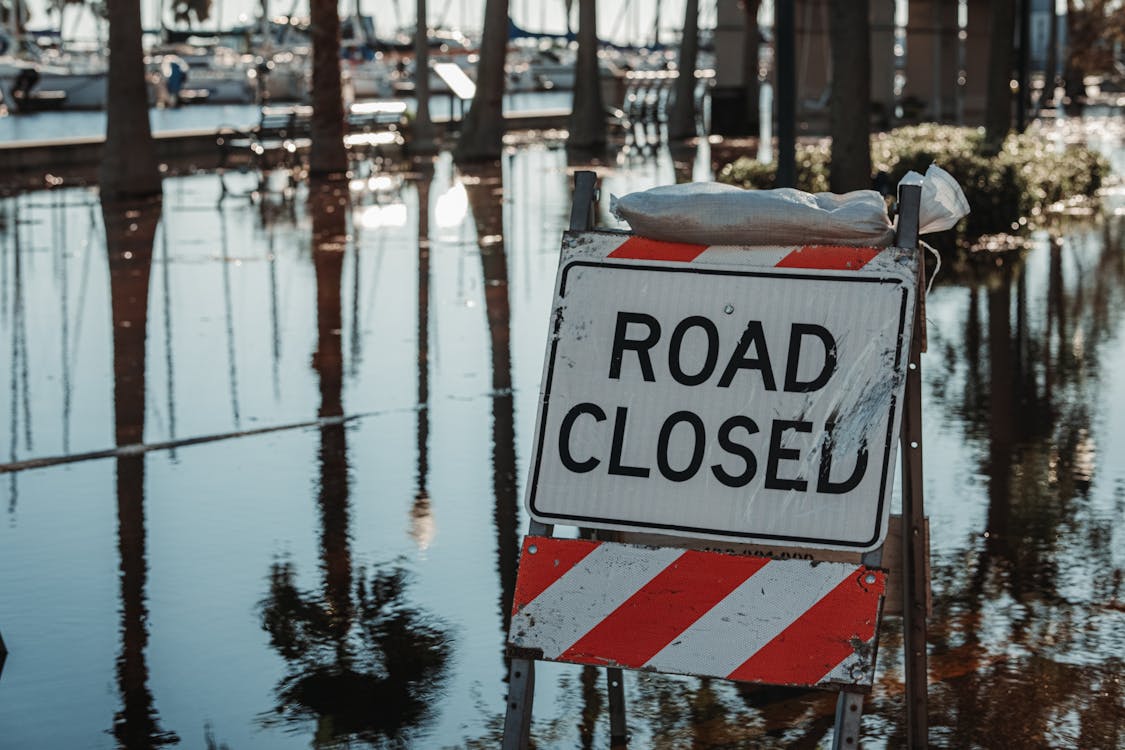Your Ultimate Guide on How to Prepare Your Home for the Hurricane Season
On average, 47 hurricanes hit the globe annually. This is from the tabulated data of 1990 to 2022. In 2022, the Northwest Pacific registered 12 occurrences, while the Northeast Pacific came second with 10 hurricanes. In that same year, 40 hurricanes were registered all over the world.
The damages resulting from the storms and heavy rains can be massive. We’ve seen whole towns devastated after an intense hurricane. What’s even more tragic, is the chaotic state of housing and services after the storm.
Protecting your home from a hurricane should be a top priority. Hurricanes are powerful forces of nature, but there are ways to minimize their severity. That’s why I wrote this comprehensive guide on how to prepare your home for the hurricane season. Stay safe!

Weather Proof the House
Start with a checklist. Address the most vulnerable aspects first, or the parts of the house that the hurricane hits hardest.
Weatherproofing your house is a simple process once you get the required material, and know exactly how to use it.
Reinforce Windows and Doors
Install Hurricane shutters: You can choose aluminum or steel shutters to protect your windows from wind or debris. Just doing that, gives you a 99% reduction in the probability of window pane damage. This also minimizes the odds that water could reach the interior of the house.
Use plywood boards: This is a budget-friendly, and quick, alternative to protect your windows. Choose exterior-grade plywood and nail them on every window or door. Cut the boards to size and brace them as hard as you can.
Seal any gaps or cracks: Water and gusts of cold wind get in through any available crevices. That’s why it’s important to seal all openings. Check the ones around windows, doors, or AC units.
Fortify garage doors: These are large sheets hinged at extreme ends, which makes them easy prey for the storm. Wind blowing at a speed of 150 mph definitely needs proportional defenses. Check the soundness of the door material and joints, then, reinforce the doors with hurricane clips or straps.
Protect the Roof and Gutters
Inspect the roof: Check that the shingles are all intact. Cracks, loose structures, and aging shingles should be replaced immediately.
Trim overhanging branches: If a heavy tree branch falls on the roof, it could easily damage the shingles. This gaping orifice would be an access point for rain, wind, and debris. It’s best then to trim any suspect branches within 10 feet of your roof.

Clean up the gutters: Water needs a clear path to drain efficiently. If the gutters are clogged, then the water would overflow onto the roof, siding, and even the foundations.
Secure Outdoor Furniture
Put loose items into storage: Try to put all the easy lightweight items into storage or even place them temporarily inside the house. All the potted plants, decorative items, toys, swings, or small chairs and tables, can be moved inside.
Chain the big stuff to a concrete wall: The larger items would be more challenging, but you need to tie them up to a secure solid structure. Chain the BBQ grill to the fence, and tie the big furniture to the patio wall.
Prepare for Power Outage
We are more dependent on power than we imagine. Almost every appliance we use for cooking, cleaning, heating, cooling, communication, climate control, and healthcare needs electricity to work.
Hurricanes often damage powerlines for days on end. Here’s what you can do to decrease the inconvenience and find alternative power for any emergencies.
Invest in a Generator
Generators are great emergency power supplies. You can choose the capacity that suits your needs. As a minimum, you should have enough electricity for the freezer, heater, and any medical devices a family member might need.
Get a specialist to connect the generator to the wiring of your house. Install surge protectors as indicated. And learn how to operate the generator, even if it’s pitch dark around you. If you stock up on gas, you can keep the gen working for a few days.
Stock Up on Emergency Lighting
Flashlights and headlamps are lifesavers if the power goes out. Make sure to keep them in a dry, easily accessible location. Keep a good supply of batteries beside the flashlights. These things drain batteries quite quickly, and you won’t have electricity to recharge.
Keep some candles and matches as a plan B. I don’t recommend using candles, as they might be a fire hazard. Dealing with a house fire is the last thing a person needs under such circumstances.
Get an Old School Radio
Radio broadcasting is surprisingly reliable, even when other forms of communication are down. Hurricanes can hit cell towers hard, and the service sometimes stays down for weeks. That’s because the technicians can only fix the towers after the storm.
Battery-powered radios can keep you connected to the outside world. You can tune in for updates regarding the hurricane progress, or further instructions from the local authorities.
Stock Up on the Essentials
A hurricane can keep you stranded at home for several days. Once the storm hits, taking the car out, and going somewhere else becomes impossible.

It’s important to prepare ahead and buy the essential supplies.
Store Enough Food and Water
As a minimum, get enough food, water, and pet meals, to last for three days. If you can get more, do that.
It’s best to pick food that doesn’t need cooking or heating. Canned food is often a good option. Also, several companies make ready-to-eat food packaged for such events, so check out their products.
You can also keep a generous supply of dry wood or coal to start a fire if your house needs heating. Store these fuels in a dry place that you can reach easily. A shed out in the garden might not be the best spot.
Additionally, if you have young children keep some board games, toys, crayons, story books, and other forms of entertainment for the little ones. That should keep them occupied and reduce their anxiety.
Buy Medicine and a First Aid Kit
This is an absolutely critical stock, so make a list, and keep the items in a dark secure place. As a minimum, get the following:
- First aid kit containing wound and burn care supplies
- Necessary medication for family members
- Necessary medication for pets
- Personal hygiene items
- Sanitary wipes
- Female care items
Arrange the Paperwork
Sometimes, we get so focused on safeguarding the physical structure of the house, that we forget little big things like paperwork. Here are a few things to consider.
Protect Your Documents
Strong wind can scatter the contents of drawers and cabinets all around the house, and water can damage any paper documents. Keep all your essential documents in waterproof containers, and store them in a secure location.
These items include:
- Insurance papers
- Birth certificates
- Passports and IDs
- Financial records
- Photo albums
- House deeds
- External hard drives
- USBs (digital storage units)
Photograph Your Home
Take several photographs of every part of your house. Cover the exterior and the interior. Record some videos as well. And make sure the dates are clear in all these visuals.
If the house is affected by the hurricane, these photographs and videos would be invaluable for insurance claims. Damage assessment would be straightforward and unambiguous with such solid evidence.
Final Thoughts
Now that you’ve done your due diligence, you should pat yourself on the back, and congratulate all the members of your family on a job well done. Hurricane preparedness is an ongoing effort, but the rest is easier.
Make proper evacuation plans, and communicate the details thoroughly to all your family. Contact your neighbors and the local authorities to see if you can help or volunteer in any efforts. Networking is essential during these rough times.
Finally, stay tuned to the news. Get all the updates about the hurricane as it approaches, and follow the local instructions and guidelines on what needs to be done. Most importantly, stay calm and in command.




